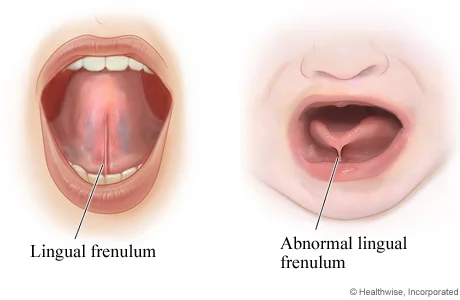
Identifying Tongue Tie in Children
Sometimes when a baby is born and there are breastfeeding difficulties it may not be diagnosed that the problem is tongue-tie as the following story attests. This child was fortunate in that his mother had gone on to study as a lactation consultant and discovered the problems her son had with breastfeeding were due to tongue tie.
Read on to find out how this young 8-year-old boy gained a happier and much better life with treatment for tongue tie.

This afternoon my 8-year-old had his tongue tie released. I’ve known for a couple of years now that he was tongue tied, but it was missed when he was a baby. When he was born I was not yet a lactation consultant, and although I was a registered nurse working on the mother-baby unit of our local hospital, I had no idea my son was tongue tied, and no one else picked up on it either. I discovered it years later as I was studying to become a Lactation Consultant. For those who don’t know, tongue tie (or ankyloglossia) is when the frenulum (thin membrane) that attaches the tongue to the floor of the mouth is unusually short/inelastic or attaches to the tongue in a manner that restricts normal movement of the tongue. Since tongue mobility is important for achieving and maintaining a good latch and effective milk transfer, a tongue tie can have a negative impact on breastfeeding. A tongue tie that prevents a baby from effectively breastfeeding can have other implications as well such as difficulties with speech, jaw development and placement of teeth
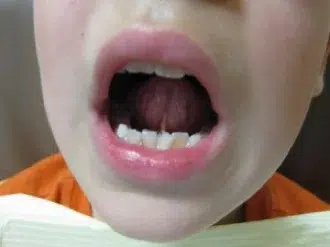
Looking back we did have issues nursing, but I didn’t realize it at the time. My son used to nurse for an hour at a time, every hour and a half. At the time I figured it was normal newborn nursing and just went with it. At five months, however, he starting biting me when he was nursing and biting badly. I was in tears every time we nursed, and I started to dread nursing him. Not knowing then what I know now, and having not yet discovered the right kinds of support, I weaned my son to formula. Looking back, the severe biting will have been caused by my son’s inability to keep his tongue over his teeth due to the tongue tie, and the long frequent feedings were likely due to him not transferring milk very effectively. Thankfully, because I went with the flow with his frequent nursing we were able to compensate and his weight gain was never an issue.
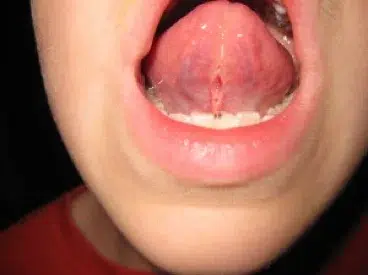
We decided to have his tongue tie released because he has needed some speech therapy for articulation difficulties, and we have already been told that he will need braces due to the crowding of his teeth. In a baby with no restriction of movement in their tongue, sucking is what shapes their palate and jaw because muscle moves bone (and the tongue is a muscle!). Normal tongue movements and sucking at the breast help to spread out the palate and widen the jaw, allowing for adequate room for teeth. When there is restriction of movement due to a tongue tie, this spreading of the palate doesn’t happen the way it should and it can lead to a lot of problems with a child’s teeth. You can see in the pictures that my son’s bottom teeth are very crowded and his two front teeth on the bottom are turning inward into almost a v shape, which is typical with a tongue tie. (For anyone who’s wondering about the black marks on his bottom front teeth, we went to the appointment straight from school, and I assume he was chewing on something black during the day – probably a pencil or something. Amazing what kids will put in their mouths!).
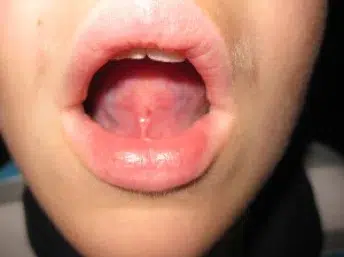
Our family has been talking for a while about whether or not we were going to have his tongue tie released, and the appointment to talk to the dentist was made after our son said he wanted it done because it hurt to stick his tongue out too far. After talking through the procedure with the dentist, our son decided that he wanted to go ahead. The dentist started by putting some numbing gel under his tongue, and then due to his age, put in some local anaesthetic (this was the worst part because of course, it stings a bit. For babies, no local anaesthetic is needed). Once the anaesthetic was in, he felt nothing, and the actual procedure (called frenotomy or frenectomy, depending on the procedure) literally took seconds. The dentist we saw used an electrocautery tool, but it can also be done with special scissors, or by laser. There was a little bleeding afterwards that was easily controlled with some pressure on it (for babies, there is usually only a drop or two of blood, and nursing immediately after the procedure is a great way to stop any bleeding).
Healing on day two. It looks good, and with frequent exercises, no adhesions are forming.
The morning after the procedure he was a little tender under his tongue, but the discomfort was easily managed with some ibuprofen. It has been really interesting to be able to hear from my son about the experience. The morning after he said that he felt like he couldn’t stick his tongue out. This tells me that already some adhesions were starting to form (the area was basically starting to heal back together). This can happen with babies too, and it is why it is so important to do exercises after the release to prevent reattachment and the need to do the procedure again. With an 8-year-old it’s easy because he can follow directions and he thinks it’s fun to stick his tongue out at mum and dad.
There are exercises that can be done with babies as well, and your lactation consultant/doctor/dentist or whoever you are working with should provide you with information on this. By the time he went to school the morning after, we had done some exercises and the area had stretched out again. In the picture of him sticking his tongue out the morning after, you can see that there is still dimpling of his tongue when he sticks it out. I am finding that his ability to extend his tongue (stick it out) is slowly improving with the exercises we are doing. It will take time because he’s had 8 years of adapting to the restricted movement of his tongue, and now we have to work on overcoming those adaptations.
Overall the experience has been a positive one for our son. He was so excited to go to school the next morning and tell his friends all about it!
Two weeks after the procedure, my son can stick his tongue out much further (without it hurting!) and the dimpling in the tip of his tongue is almost gone.
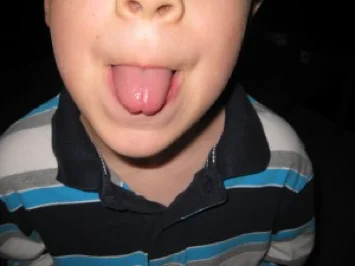
For more information about tongue and lip-tie, please see the links below:

For more information on lip or tongue-ties, please do not hesitate to contact DentalCareXtra. Alternatively, complete the form below, and one of our friendly team members will contact you.






